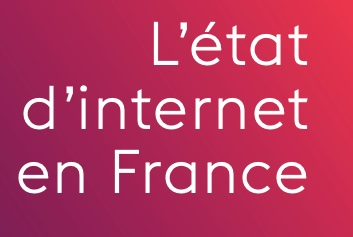In its annual report on the state of the Internet in France, Arcep (Autorité de régulation des communications électroniques, des postes et de la distribution de la presse) presents its latest work and analyses to ensure the smooth operation of the Net and its development as a "common good". In particular, the report addresses quality of service, data interconnection, the transition to IPv6, net neutrality, economic regulation of platforms and data, and reducing the environmental footprint of digital technology.
Data traffic in France has increased twenty-fold in ten years
In 10 years, between 2012 and 2022, incoming traffic managed by the main Internet Service Providers (ISPs) has increased 20-fold. It will reach 43.2 Tbit/s by the end of 2022, an increase of 21.5% compared to 2021.
Aware that this figure is steadily rising, and that it is likely to increase further in the years to come, Arcep has checked whether ISP infrastructures can accommodate such speeds.
Between the start of 2012 and 2022, incoming interconnection traffic to the main Internet Service Providers (ISPs) increased 20-fold, reaching 43.2 Tbit/s by the end of 2022 (+21.5% on 2021). The installed capacity of these ISPs grew in the same proportions over the period, from 5.4 Tbit/s at the start of 2022 to 108 Tbit/s at the end of 2022.
Netflix will account for almost 20% of French Internet traffic by 2022
In 2022, 54% of traffic to the customers of the main ISPs in France will come from five players: Netflix, Google (10.5%), Akamai, Meta and Amazon. The rest of the traffic (46%) comes from a wide variety of players interconnecting with ISPs.
Netflix alone will account for almost 20% of French Internet traffic in 2022. " This indicates an increasingly clear concentration of traffic between a small number of players whose position in the content market is being strengthened," Arcep points out.
Good mobile Internet quality
In mainland France, quality of service remains high. All four operators achieved very high results in the web page display test (2G/3G/4G). Over 96% of attempts in densely populated areas, over 93% of attempts in intermediate areas, and over 84% of attempts in rural areas were displayed in less than ten seconds for all operators.
The rate of videos viewed (streaming) in perfect quality has risen by four points in densely populated areas compared with last year, with a success rate of over 95%. It reached over 91% in intermediate zones and over 82% in rural areas.
Service quality is improving on all transport routes:
- on the roads measured, on average, all operators combined, nearly 95% of web pages are displayed in less than ten seconds;
- on rail routes, the situation is more contrasted: on average, it is possible to display a web page in less than ten seconds on TGV, Intercités and TER trains, in only 81% of cases, whereas navigation is smoother on RER and Transiliens trains (90%) and metros (95%).
Overseas, progress in Internet service quality is mixed.
Ecosystem transition to IPv6: still wide disparities between different Internet players.
The IPv6 take-up rate is rising nationwide, reaching more than 62% by mid-2023 (compared with 51.2% in June 2022). French operators have made progress in their transition to IPv6 for both fixed and mobile networks. According to the barometer's forecasts, by mid-2025, 94% of consumer customers on fixed networks and 88% of consumer customers on mobile networks should have access to IPv6 addressing enabled by default. The situation is different for hosting providers, who are lagging behind in the transition to IPv6: by mid-2022, the rate of IPv6-accessible websites was just 25%, and 8.3% for mail servers.
The environmental challenges of digital technology
The trend in the digital industry's environmental footprint calls for all stakeholders to take responsibility for reducing the sector's environmental impact (greenhouse gas emissions, consumption of resources including metals/minerals, biodiversity, etc.).
The eco-design of digital services is one of the levers identified by Arcep to reduce the environmental footprint of digital services.
ARCEP highlights the role of video codecs in minimizing the environmental footprint of video. By 2022, 66% of Internet traffic will be video. A codec is a hardware or software device used to encode and decode a digital data stream. It optimizes the volume of data in a video and can help reduce its weight and associated environmental impact.
Nearly a year after the enactment of the Digital Markets Act (DMA), Arcep and BEREC are continuing their work to contribute to the construction of economic regulation of the digital age. Between now and the end of 2023, BEREC and Arcep will be examining the implementation of the Data Act and the Data Governance Act.
Référence :





